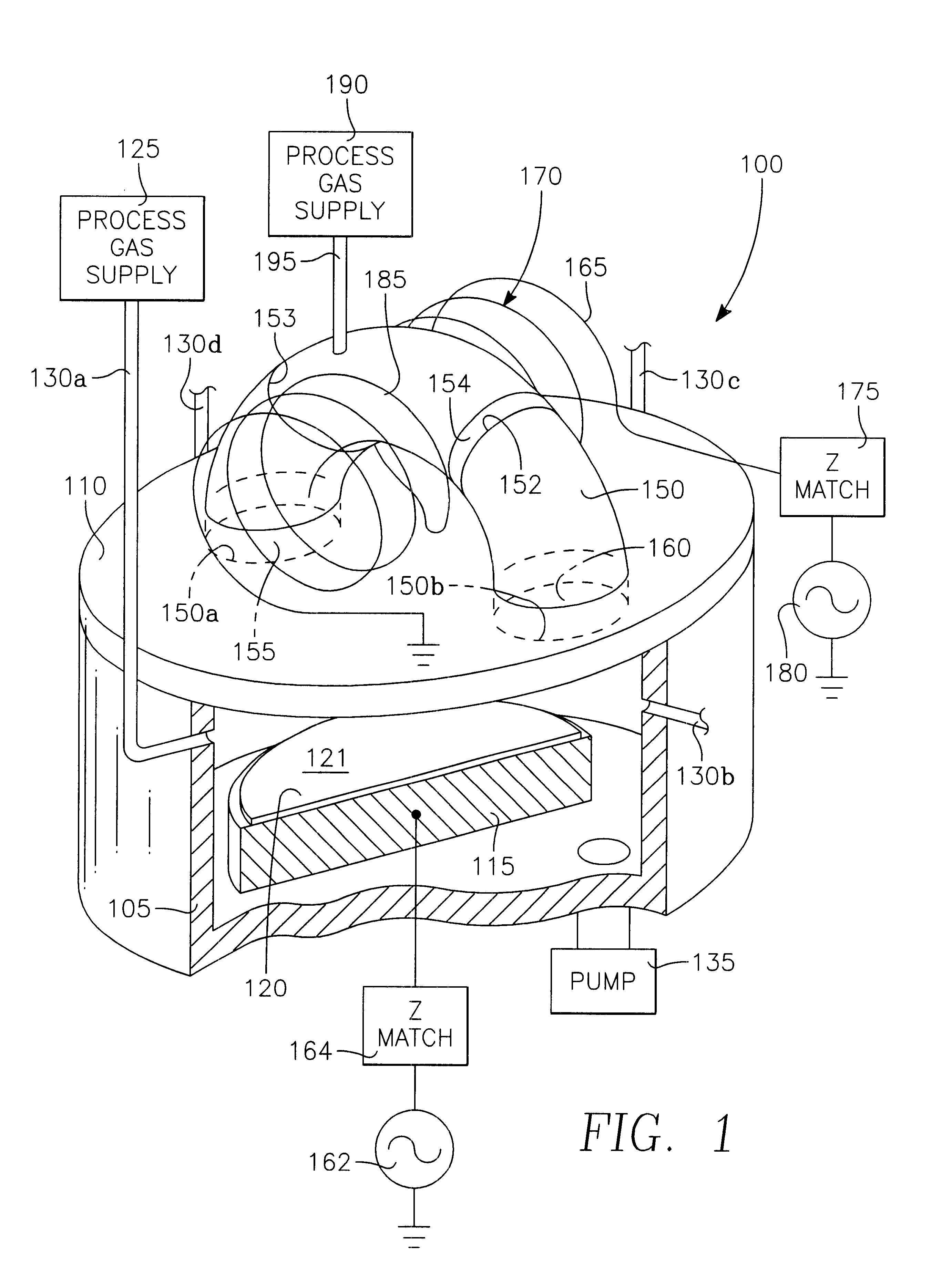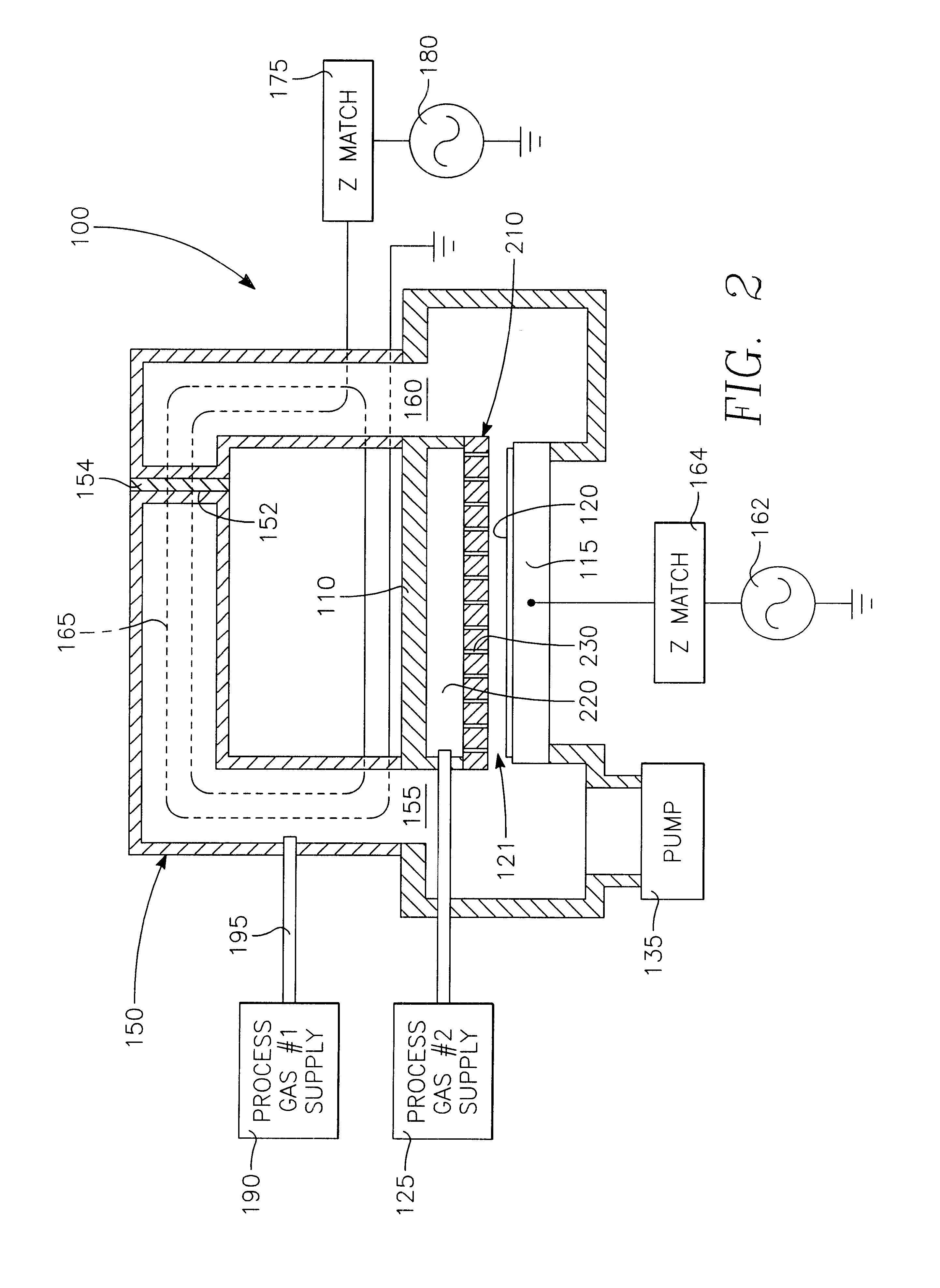Externally excited torroidal plasma source using a gas distribution plate
a gas distribution plate and plasma source technology, applied in the field of plasma reactors, can solve the problems of slow and therefore relatively less productive, difficult to process plasma of such devices, and increase the processing difficulty of such devices, so as to increase the selectivity of etching to photoresist or other materials, and increase the plasma ion density
- Summary
- Abstract
- Description
- Claims
- Application Information
AI Technical Summary
Benefits of technology
Problems solved by technology
Method used
Image
Examples
Embodiment Construction
FIG. 9 illustrates a modification of the embodiment of FIG. 1 in which the side antenna 170 is replaced by a smaller antenna 910 that fits inside the empty space between the ceiling 110 and the hollow conduit 150. Preferably, the antenna 910 is a single coil winding centered with respect to the hollow conduit 150.
FIGS. 10 and 11 illustrate how the embodiment of FIG. 1 may be enhanced by the addition of a closed magnetically permeable core 1015 that extends through the space between the ceiling 110 and the hollow conduit 150. The core 1015 improves the inductive coupling from the antenna 170 to the plasma inside the hollow conduit 150.
Impedance match may be achieved without the impedance match circuit 175 by using, instead, a secondary winding 1120 around the core 1015 connected across a tuning capacitor 1130. The capacitance of the tuning capacitor 1130 is selected to resonate the secondary winding 1120 at the frequency of the RF power source 180. For a fixed tuning capacitor 1130, ...
PUM
| Property | Measurement | Unit |
|---|---|---|
| Power | aaaaa | aaaaa |
| Diameter | aaaaa | aaaaa |
| Length | aaaaa | aaaaa |
Abstract
Description
Claims
Application Information
 Login to View More
Login to View More - R&D
- Intellectual Property
- Life Sciences
- Materials
- Tech Scout
- Unparalleled Data Quality
- Higher Quality Content
- 60% Fewer Hallucinations
Browse by: Latest US Patents, China's latest patents, Technical Efficacy Thesaurus, Application Domain, Technology Topic, Popular Technical Reports.
© 2025 PatSnap. All rights reserved.Legal|Privacy policy|Modern Slavery Act Transparency Statement|Sitemap|About US| Contact US: help@patsnap.com



